Plymouth (August
2018)
"Plimoth Plantation"
"Plimoth Plantation"
A
recreation of both Native American and English Villages
circa
1620 Members of the Wampanoag tribe described life in their 17th village and present day descendants' lives |
|
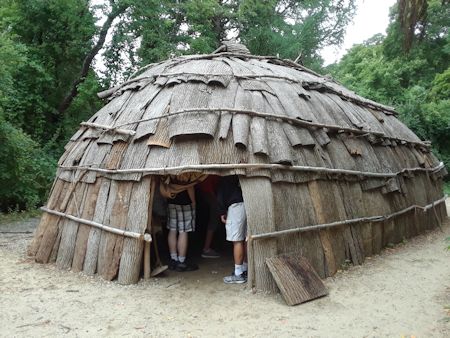 |
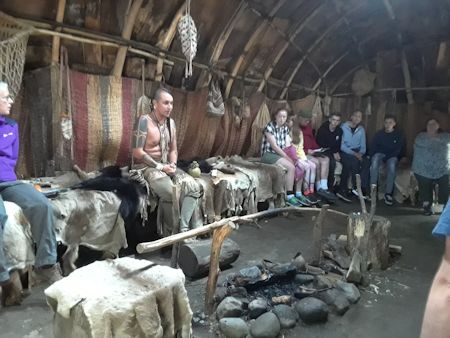 |
Native
Cooking |
and
Craftsmenship |
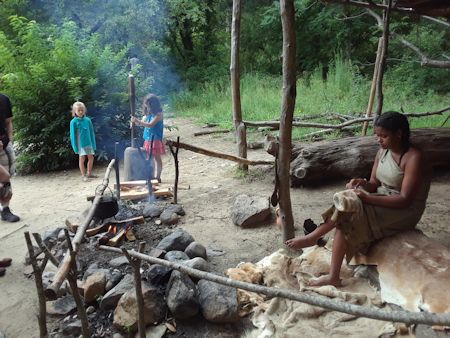 |
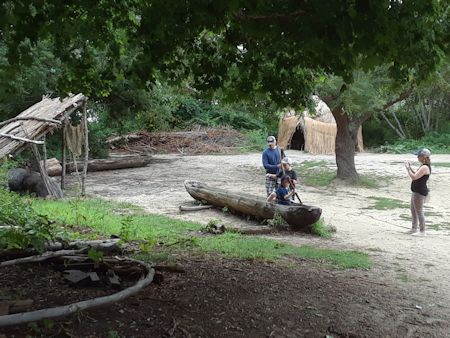 |
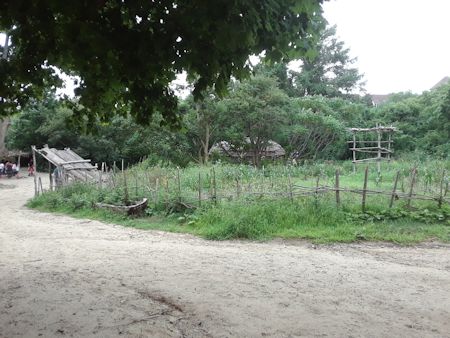 |
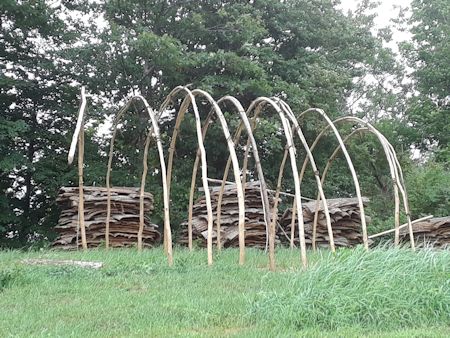 |
It took a few years for the English settlers
to contruct a village like this. According to the Wampanoag guide, the English first occupied a deserted Native American village. It was abandoned because all inhabitants had died of some illness. |
|
The wooden fort was built on the high ground
as we learned earlier at the site of "Burial Hill" |
|
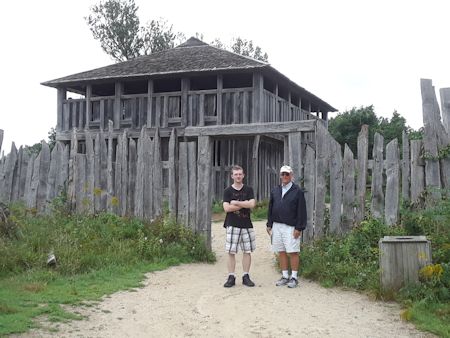 |
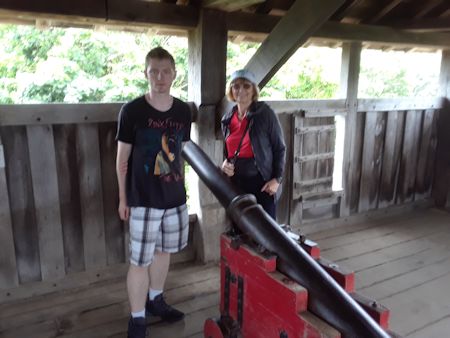 |
Looking
down into the village |
Each
house was identified with names of the settlers |
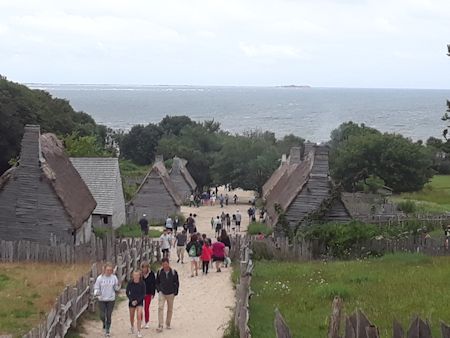 |
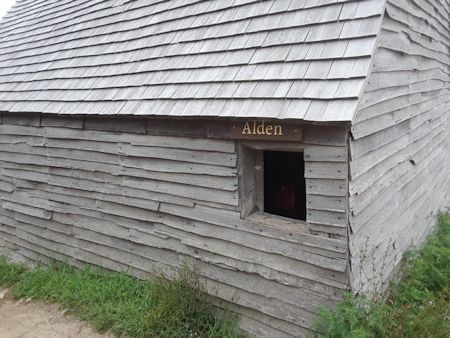 |
Interior furnishings are replicas
of those acquired by the settlers from subsequent arrivals of ships
from England bringing supplies and more settlers |
|
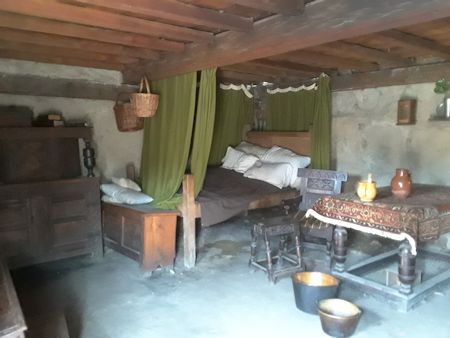 |
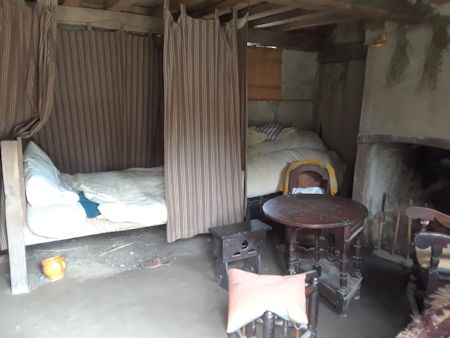 |
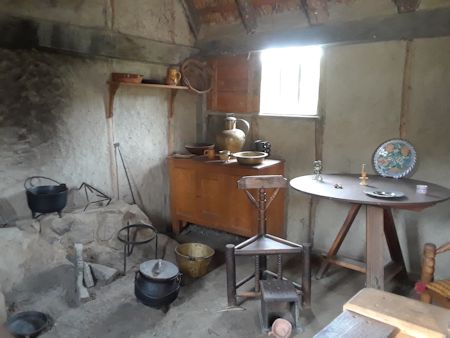 |
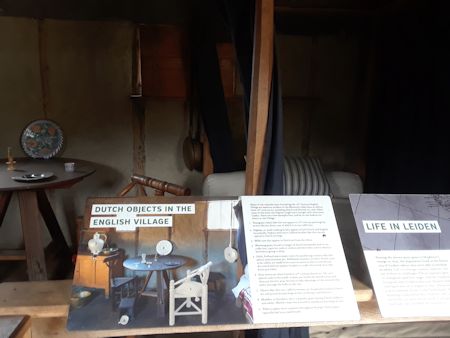 |
"Settlers" stayed in character as they described
life in the village We would meet this young man again later in the day |
Very "free range" chickens |
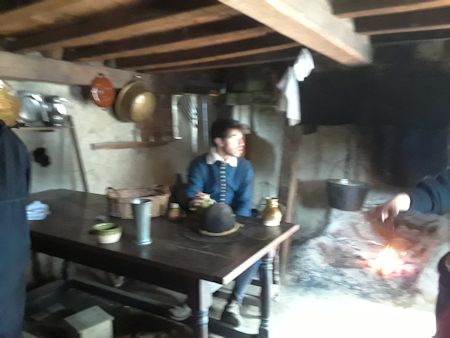 |
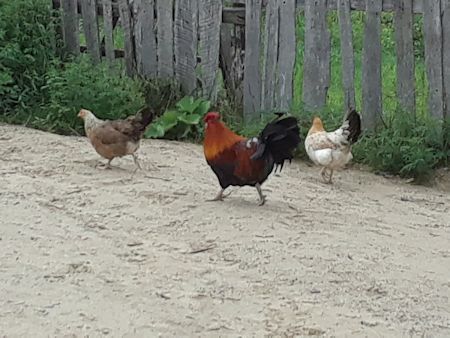 |
Gardening plants that were cultivated back
then |
The village baking oven |
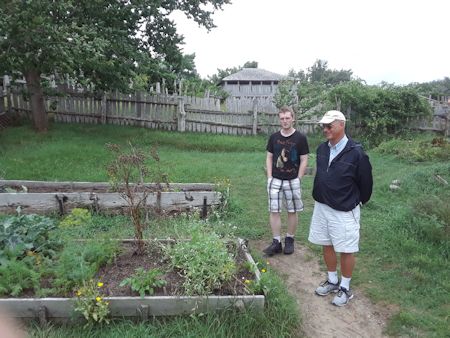 |
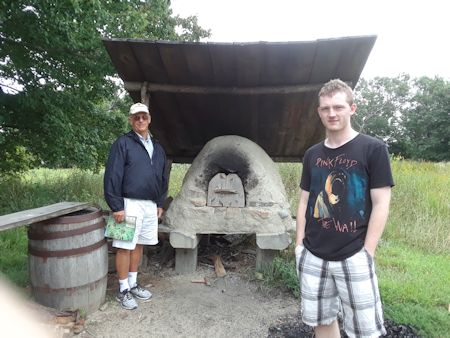 |
Suddenly the "villagers" were summoned by a
drumbeat and call to assembly |
|
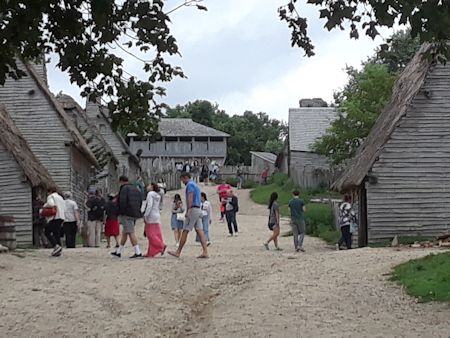 |
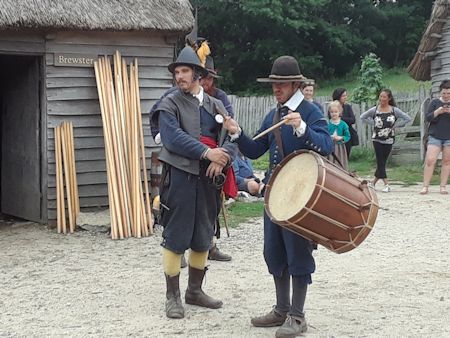 |
We recognized the drummer from one of the houses
we visited |
"Miles Standish" the leader of the "militia"
took charge |
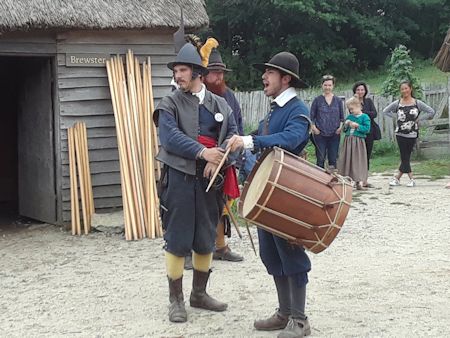 |
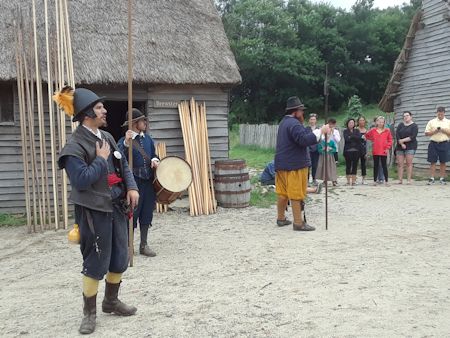 |
All
"men age 16 to 60" were called to do their duty BUT the gender requirement was waived, reflecting 21st century reality |
|
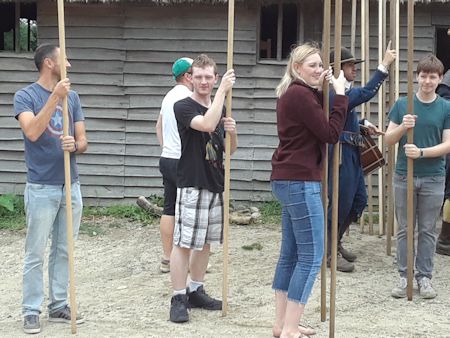 |
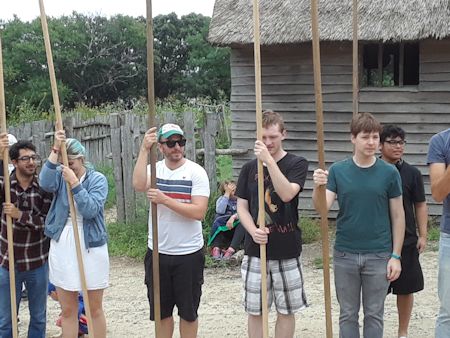 |
The age requirement was also changed
to "anyone who can take direction and tell LEFT from RIGHT |
|
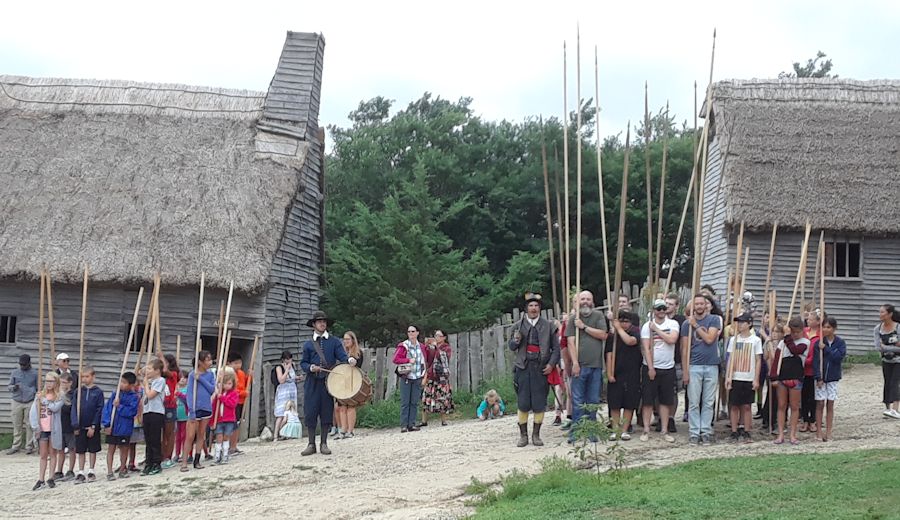 |
|
Commander
Standish demonstrated how to hold and use the lance |
|
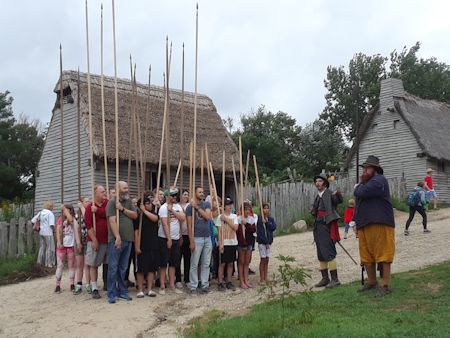 |
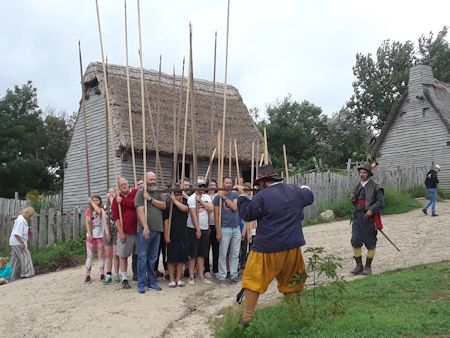 |
Close
formation and |
Off they go to defend the village |
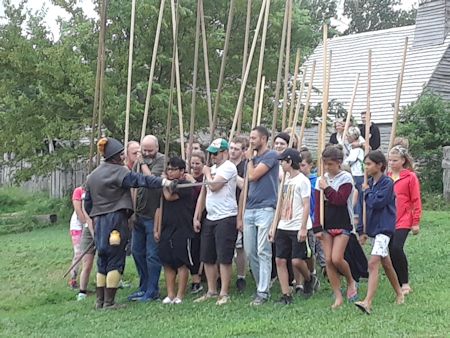 |
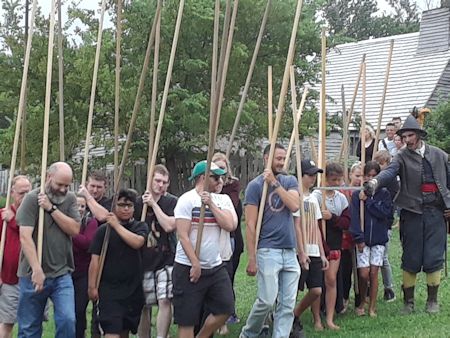 |
